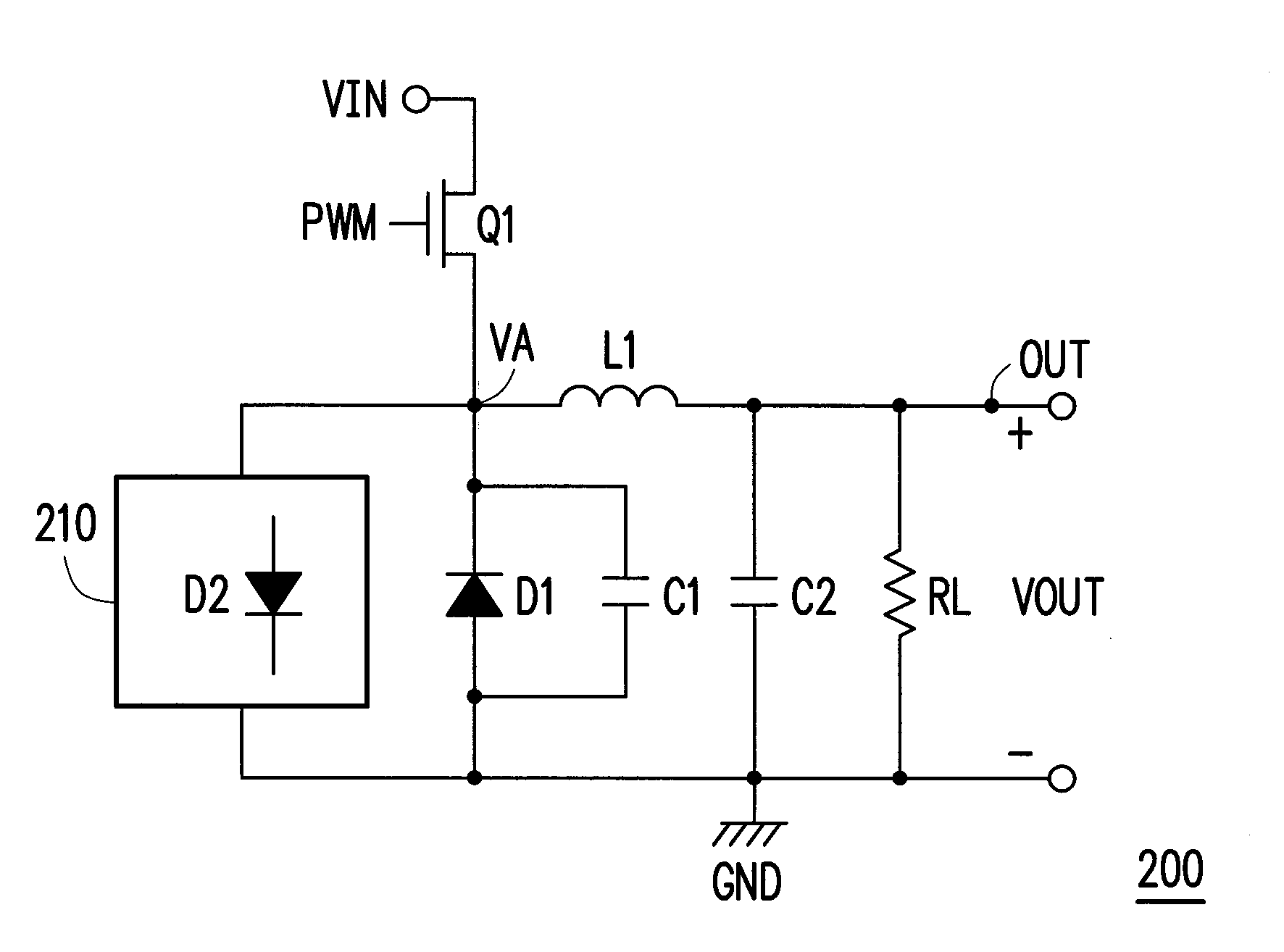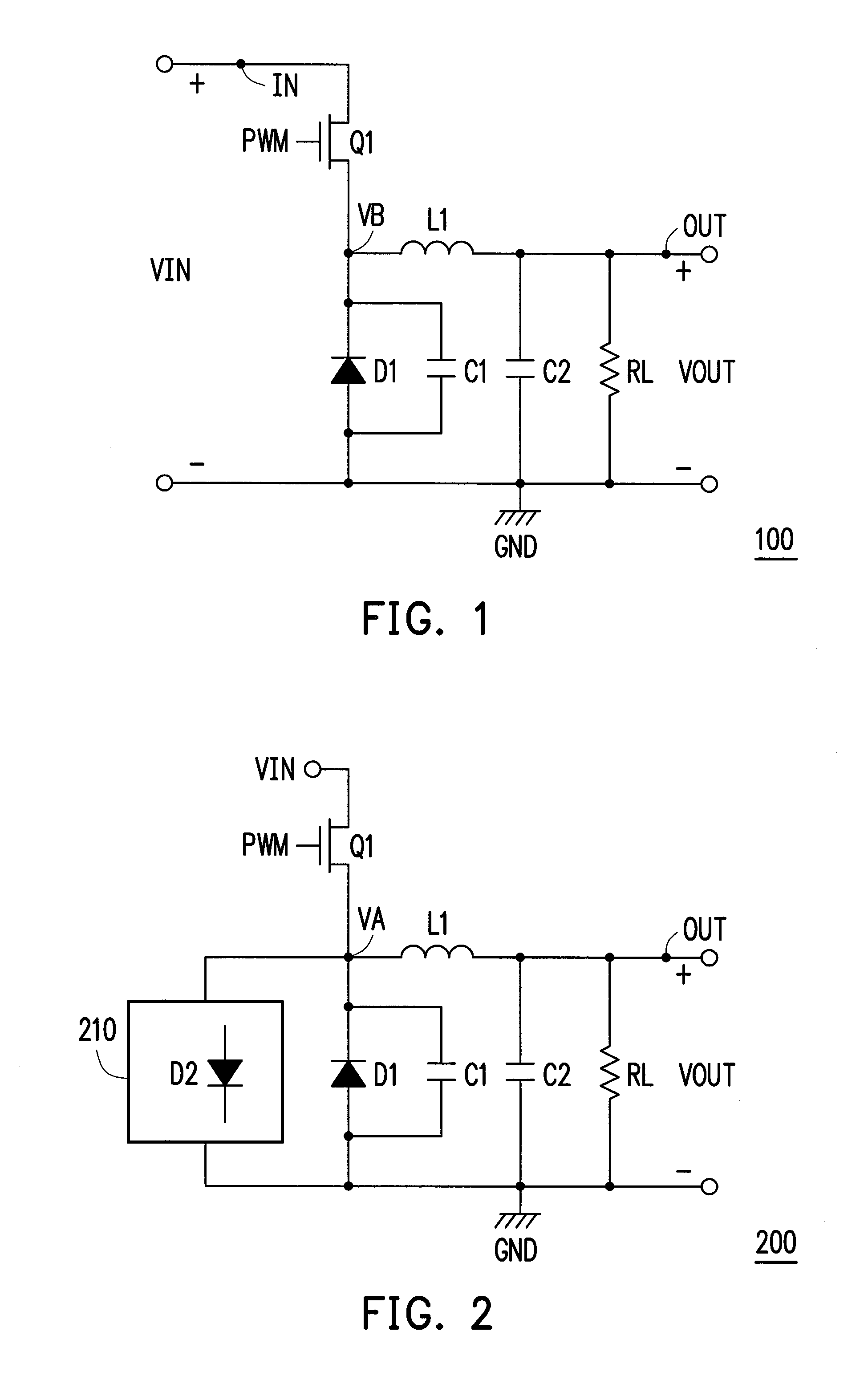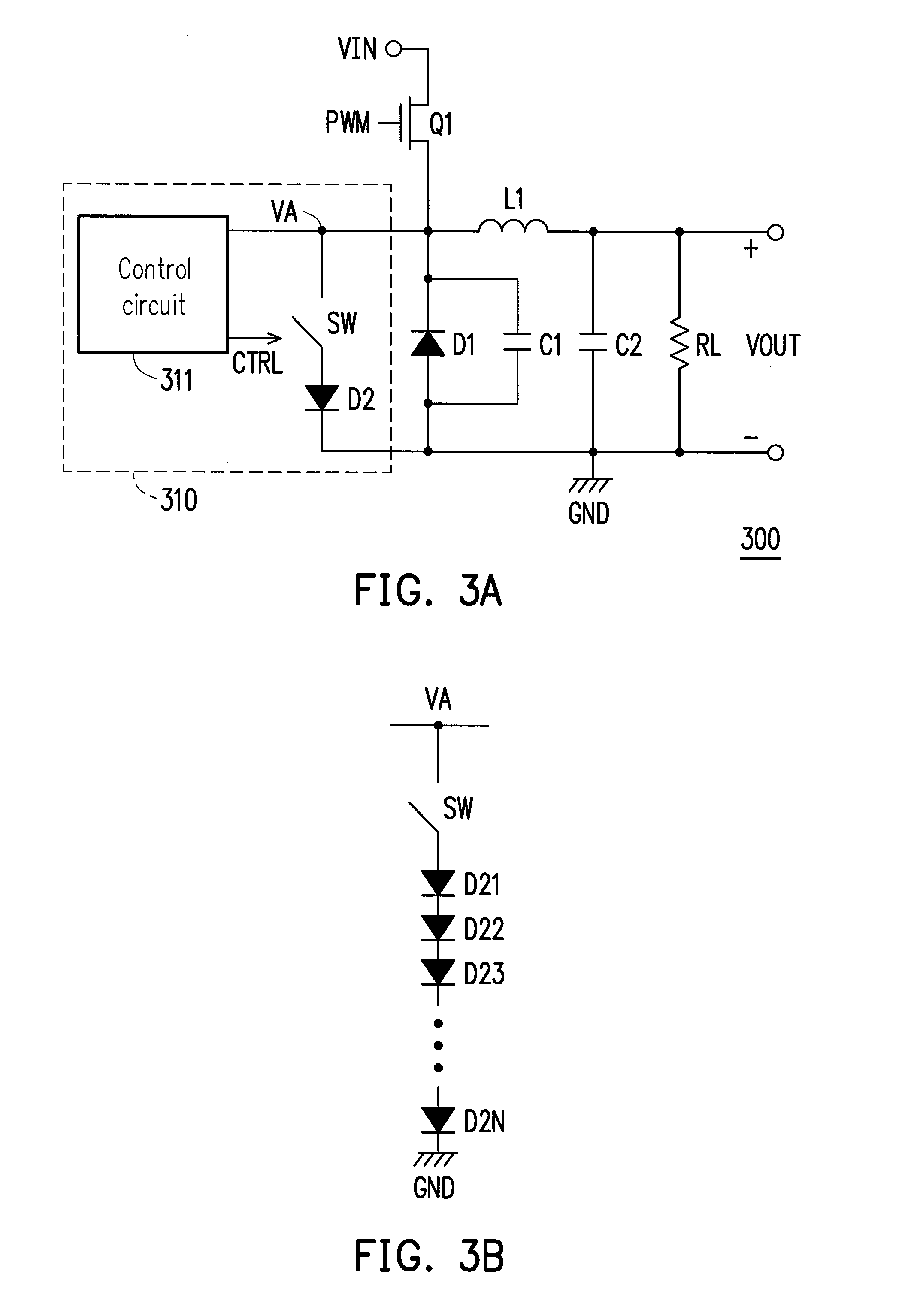Buck power converter
- Summary
- Abstract
- Description
- Claims
- Application Information
AI Technical Summary
Benefits of technology
Problems solved by technology
Method used
Image
Examples
Embodiment Construction
[0023]Please refer to FIG. 2, which schematically illustrates a buck power converter 200 according to an embodiment of the invention. The buck power converter 200 includes a power transistor Q1, an inductor L1, a diode D1, and an anti-ringing circuit 210. The power transistor Q1 has a first terminal (e.g. a source), a second terminal (e.g. a drain), and a control terminal (e.g. a gate). The first terminal of the power transistor Q1 receives an input voltage VIN, and the control terminal of the power transistor Q1 receives a pulse width modulation signal PWM. According to the pulse width modulation signal, the power transistor Q1 is switched on or off. The second terminal of the power transistor Q1 is coupled to one terminal of the inductor L1, and the other terminal of the inductor L1 is coupled to an output terminal OUT of the buck power converter 200, so as to generate an output voltage VOUT.
[0024]The diode D1 is serially coupled between the second terminal of the power transistor...
PUM
 Login to View More
Login to View More Abstract
Description
Claims
Application Information
 Login to View More
Login to View More - R&D
- Intellectual Property
- Life Sciences
- Materials
- Tech Scout
- Unparalleled Data Quality
- Higher Quality Content
- 60% Fewer Hallucinations
Browse by: Latest US Patents, China's latest patents, Technical Efficacy Thesaurus, Application Domain, Technology Topic, Popular Technical Reports.
© 2025 PatSnap. All rights reserved.Legal|Privacy policy|Modern Slavery Act Transparency Statement|Sitemap|About US| Contact US: help@patsnap.com



